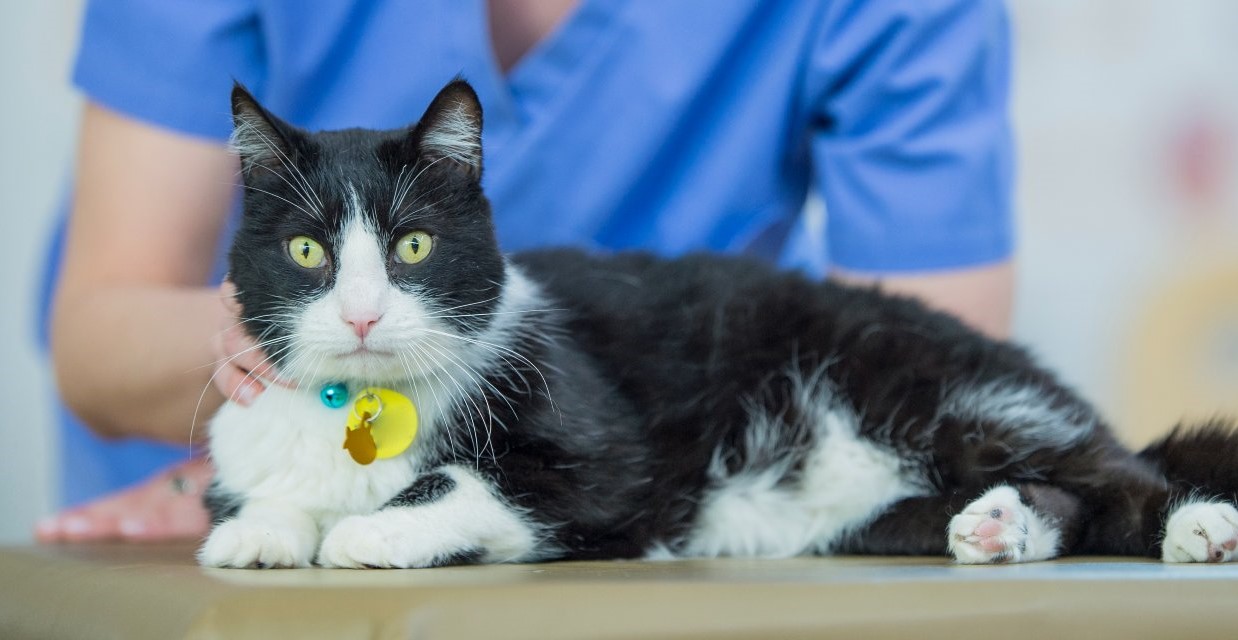Hyperthyroidism is a serious health problem for cats, usually as they get older. It’s a disorder involving multiple body systems associated from an overactive, malfunctioning thyroid gland in cats. It can cause weight loss, muscle deterioration, heart failure, sudden blindness and even sudden death.
Hyperthyroidism is caused by a growth in one or both of your cat’s thyroid glands, which results in the making of too much thyroid hormone.
Fortunately, these growths are usually benign, or non-cancerous. Only a small percentage of cases are a result of cancer.
Identifying the Signs
Hyperthyroidism usually occurs in middle-aged and senior cats, it’s less common in younger cats less than 10 years of age.
The signs of hyperthyroidism can be subtle when the disease is in its early stages, but the most common thing you’ll notice is that your cat may seem unusually hungry. But through all of this, they’re losing weight. (Don’t be fooled though, even larger and overweight cats can be prone to hyperthyroidism).
Cats often become thirsty as well, and may seem irritable and restless.
Mild to moderate diarrhoea and/or vomiting is also common.
As the disease progresses and affects their other bodily organs, a variety of new symptoms may develop.
Common Causes of your Cat’s Thyroid Condition
Hyperthyroidism in cats has become more common in recent years, and in certain areas of the world, research shows. One of the possible explanations being hyperthyroidism is one of many diseases that have become more popular because today’s cats are living long enough to develop these conditions more common in ‘senior cats – thanks to good health and diet.
Too much or too little dietary iodine could be another reason why felines develop hyperthyroidism, or at least play a role in the progression of the disease. Just how much iodine is used in prepared cat foods can vary widely, which is why feeding a more premium diet is a good idea.
The different causes of the condition are still being explored. Always speak to your vet if you notice any of the signs above, for a full diagnosis. Your vet may be able to organise a blood test to confirm if there’s a high T4 (thyroxine) level. While this can indicate hyperthyroidism, some cats get borderline results and require further blood tests and/or other diagnostics.
Treating Thyroid Problems in Cats
Your vet is the best person to recommend the best treatment for your cat. This is often based on the cat’s age, symptoms, health status and how well they think your cat can handle the treatment.
Radioactive Iodine
The most effective and safest treatment is radioactive iodine, which can destroy the abnormal thyroid tissue without damaging the surrounding tissues or parathyroid glands. This treatment is especially common if they’ve been diagnosed early in the course of the disease. Following the procedure, your vet will monitor their blood to make sure the thyroid levels returns to normal. We’re happy to say that in most cases, this treatment can cure the condition completely) and no ongoing therapy is required.
This treatment usually requires a stay at the vet hospital for about a week.
Medical Treatment
Another treatment for hyperthyroidism is medication. It’s important to note that medications controls but does not cure hyperthyroidism. So it will need to be administered once or twice a day for the rest of their lives. It can have some side effects in some cats, such as tummy upsets, but these can usually be controlled by stopping the medication and increasing the dose more slowly. But you should always speak to your vet before changing any medication you’re giving to your pet.
The medication is inexpensive but does need to be monitored through blood tests, for therapeutic levels and side effects. Believe it or not, the costs of radioactive iodine become comparative or even favourable, in a short space of time. Discuss your situation with your vet to decide on the type of treatment that is best suited for your cat.
Some studies have found that cats treated with radiotherapy have a much longer median survival time compared to those on medications. This may be due to how hard it can be to regularly medicate your cat, which can ultimately lead to periods of incomplete treatment.
Surgery
The final treatment option for hyperthyroidism is surgery, in which the affected thyroid gland tissue is removed. This isn’t the most popular option anymore because of the risks associated with anaesthesia and post-operative complications.
Remember, when diagnosed early, hyperthyroidism is a treatable condition. If your cat is over seven years of age, take them to the vet for regular annual blood test to screen for old age problems including hyperthyroidism.Consult with your vet for the best advice on senior cat care.





